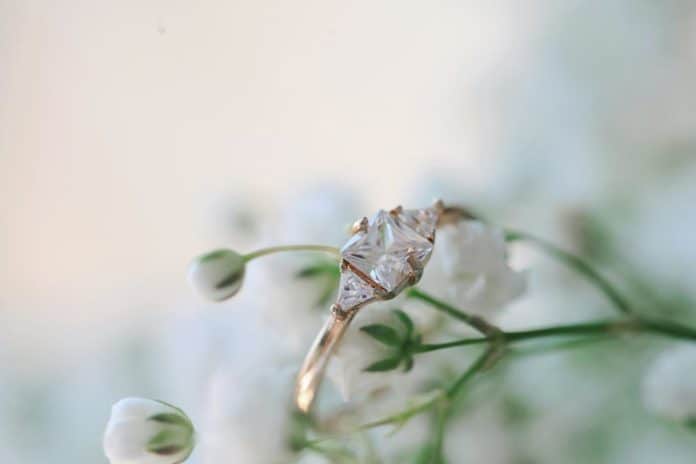When it comes to diamond clarity, this is often confused with diamond color. This is because diamond color often refers to how see-through it is, which can also be phrased as ‘how clear’ the diamond is! In fact, clarity refers to how well light can flow through the diamond, and is a measure of how many flaws, cracks, fractures and inclusions there are in the stone and on the surface.
What are Inclusions?
All natural diamonds have some flaws or imperfections, unless they are highly exceptional stones that can genuinely earn the label ‘flawless’. Those that do exist command very high prices indeed! If you are ever offered a suspiciously flaw-free stone for too low a price, it would be best to get a second opinion or insist upon a certificate from AGS or GIA – lab grown diamonds tend to be high-clarity, but are not as valued as natural stones, and many dealers will not touch them at all. GIA and AGS only deal with natural stones.
How is Clarity Graded?
As mentioned above the ‘top’ rating for clarity is ‘flawless’, sometimes written as ‘internally flawless’, with flawless seen as minutely better than internally flawless which allows for tiny blemishes. These are abbreviated to FL/IF. After that comes Very Very Slightly Included, written as VVSI, followed by Very Slightly Included (VSI). Following that comes Slightly Included and Included, neither of which would be described as being highly desirable on the clarity front. (You can compare diamond clarity at Pricescope.)
More Details
The above classifications are applied to diamonds that are being studied under magnification at a factor of ten, or x10 magnification. This can result in diamonds with some flaws on their certificate being rated as ‘eye clean’ which means that the inclusions cannot be seen with the naked eye. Eye clean is often a good selling point as it means the diamonds will allow a good flow of light into and around the stone for that evocative diamond sparkle.
So… Which Clarity is Best?
Obviously the top ratings will see the price of a diamond go up, meaning that you are getting what you pay for – but you will not necessarily be getting a good deal, and you may struggle to make back your money on your investment. Therefore, FL/IF rated diamonds will be a good buy, but not necessarily the best buy for your money.
On the other end of the scale, I diamonds should also be avoided, simply because good jewelers will not be happy with them and will be unlikely to give you a good price in the event that you need to sell them – some jewelers may even refuse to work with them if you are having a piece of jewelry made because the larger and more prevalent the inclusions, the weaker the stone is likely to be, and no jeweler wants to be the one to tell you that your bargain diamond has cracked in two and offers zero light return.
The best clarity for getting value for money is somewhere in between. Preferably eye clean so the diamond looks good to onlookers, but with a few small inclusions to bring the price down by making the diamond slightly less desirable to other purchasers. A VS2 diamond is often seen as the ‘sweet spot’ for value/beauty, however provided you are viewing the diamond with high-res imaging or through a jewelers loupe, this is flexible. You can find eye-clean SI1 and even SI2 diamonds that give fantastic light return for a fraction of the price.
Jennifer
Information sourced by the author for luxuryactivist.com. All content is copyrighted with no reproduction rights available. Images are for illustration purposes only.
